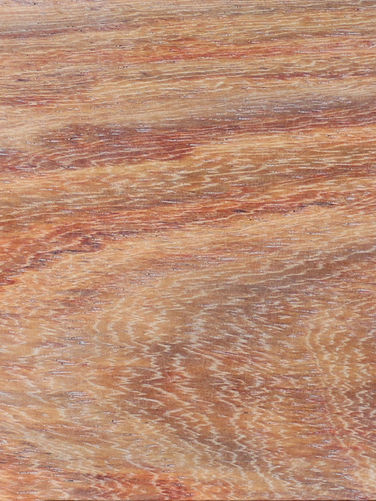
OUR WOOD
- The life of our craft. -
We source only premium grade hardwood timber from sustainable sources for the manufacture of our solid wood furniture pieces. A deep love for wood sets us apart from mass producing manufacturers. We celebrate its uniqueness in every design that we make. Our focus in design has always been on the wood itself – wood is timeless.
Using our vast experience and understanding of various solid woods we love to design to suit our client’s tastes and wants. Using the latest technology in design software we can bring ideas to life.
We offer a full 5 year guarantee on our workmanship.
WOOD TYPES AND FINISHES
The heartwood is a light to medium brown colour. Sapwood can be very wide, and tends to be a beige or light brown; not always clearly or sharply demarcated from heartwood. Ash has a medium to coarse texture similar to oak. The grain is almost always straight and regular, though sometimes moderately curly or figured boards can be found. The heartwood is rated as perishable, or only slightly durable in regard to decay. Ash is also not resistant to insect attack.
Ash produces good results with hand or machine tools. Responds well to steam bending. Glues, stains, and finishes well.
Ash is among the least expensive utility hardwoods available domestically; it should compare similarly to oakin terms of price.
This wood species is not listed in the CITES Appendices or on the IUCN Red List of Threatened Species. White Ash has excellent shock resistance, and along with hickory (Carya spp.), it is one of the most commonly used hardwoods for tool handles in North America — particularly in shovels and hammers where toughness and impact resistance is important. When stained, ash can look very similar to oak (Quercus spp.), although oaks have much wider rays, which are visible on all wood surfaces — even on flatsawn surfaces, where they appear as short, thin brown lines between the growth rings.
ASH
- Fraxinus Americana -
Acacia melanoxylon
Native to Tasmania and eastern Australia; also introduced to Africa, South America, and southern Asia. The Colour can be highly variable but tends to be medium golden or reddish brown, similar to Koaor Mahogany.
There are usually contrasting bands of colour in the growth rings, and it is not uncommon to see boards with ribbon-like streaks of colour. Boards figured with wavy and/or curly grain are also not uncommon.
The grain is usually straight to slightly interlocked, and sometimes wavy. Uniform fine to medium texture. Blackwood is rated as moderately durable regarding decay resistance, though susceptible to insect attack.
Blackwood is easily worked with both hand and machine tools, though figured wood and pieces with interlocked grain can cause tear out. Blackwood turns, glues, stains, and finishes well. Responds well to steam bending. Although Australian Blackwood is considered an invasive species and a pest in some areas, the lumber is still fairly expensive, and figured wood is even costlier. It has been used as a lower-cost alternative to Hawaiian Koa. This wood species is not listed in the CITES Appendices or on the IUCN Red List of Threatened Species. Although called Blackwood, the name is somewhat of a misnomer, as its wood is not at all black. Rather, its lustrous golden brown grain has been used as a sustainable alternative to Koa. The species has been introduced to a number of regions worldwide — either as an ornamental shade tree or on a plantation for lumber — and in many areas, the hardy tree species has become an invasive species.
Australian Blackwood compares very closely with Koa. Australian Blackwood tends to have a straighter grain and slightly better machining characteristics than Koa.
AUSTRALIAN BLACKWOOD
- Tasmanian Blackwood
Acacia Blackwood -
Kiaat is indigenous to South and Central Africa. It forms part of the teak family and is commonly known as African teak.
The heartwood colour can vary widely from a lighter golden brown to darker reddish or purplish brown. The wood becomes more subdued with age. The grain is straight to interlocked which makes it excellent for furniture making. It has a medium to coarse texture with a low natural luster. Kiaat machines and finishes very well.
The heartwood is rated as being durable and has a good resistance to insect attack. Kiaat is used for Furniture, boatbuilding,
veneer and turnings.
KIAAT (AFRICAN TEAK)
- Pterocarpus angolensis -
- Quercus alba -
WHITE OAK
Oak is rated as very durable; frequently used in boatbuilding and tight cooperage applications. Produces good results with hand and machine tools. Has moderately high shrinkage values, resulting in mediocre dimensional stability, especially in flatsawn boards.
Can react with iron (particularly when wet) and cause
staining and discolouration. Responds well to steam-bending.
Glues, stains, and finishes well.
This wood species is not listed in the CITES Appendices or on
the IUCN Red List of Threatened Species. White Oak is the
state tree of Connecticut, Illinois, and Maryland. Connecticut’s state quarter was minted with a picture and inscription of a famous White Oak tree, The Charter Oak. White Oak is strong, beautiful, rot-resistant, easy-to-work, and economical, representing an exceptional value to woodworkers. It’s no wonder that the wood is so widely used in
cabinet and furniture making.
DISCLAIMER FOR ALL WOOD TYPES
Wood is a natural product and the colour and specific grain of the final product will vary from the examples shown on the website. Wood is not a blank canvas and when adding coloured finishes the natural colour of the wood will affect the final colour of the product resulting in slight colour variations from the samples as shown.
































